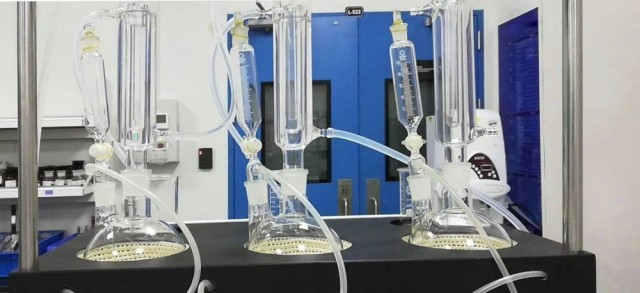Components and Functionality of Rotary Evaporators
Main Components
The rotary evaporator is a sophisticated piece of laboratory equipment designed for efficient solvent removal. It comprises several critical components, each playing a vital role in the distillation process. At the heart of the system is the rotary motor, which rotates the evaporation flask to create a large surface area for evaporation. This rotation is typically controlled by a variable-speed motor, allowing precise adjustments based on the solvent's properties and the desired evaporation rate.
The evaporation tube is another essential component, facilitating the transfer of heat and solvent vapors. It is often made of glass, ensuring compatibility with various solvents and maintaining the integrity of the sample. The vacuum system is crucial for reducing the pressure within the evaporation flask, thereby lowering the boiling point of the solvent. This system typically includes a vacuum pump, sealing components, and a vacuum gauge to monitor pressure levels.
The fluid heating pot is responsible for maintaining the necessary temperature to drive the evaporation process. It is usually filled with a heating medium such as water or oil, and its temperature is carefully regulated to ensure efficient distillation without compromising sample integrity. The condensation tube and condensation sample collection flask work in tandem to condense the solvent vapors back into liquid form. The condensation tube is often equipped with a cooling system, such as chilled water circulation, to facilitate rapid condensation and collection of the distilled solvent.
Each of these components is meticulously designed to optimize the efficiency and safety of the rotary evaporation process. Their combined functionality ensures that the rotary evaporator can handle a wide range of solvents and distillation requirements, making it an indispensable tool in laboratory settings.
Operating Principle
The core operation of a rotary evaporator involves placing the evaporation flask under negative pressure, typically achieved by a vacuum pump. This negative pressure significantly lowers the boiling point of the solvent, facilitating faster and more efficient evaporation. Simultaneously, the evaporation flask is rotated at a constant speed, which serves to enhance the evaporation process in several key ways.
Firstly, rotation increases the surface area of the liquid, exposing more solvent to the vacuum and heat, thereby accelerating the evaporation rate. This is akin to spreading out a wet towel to dry more quickly in the sun. Secondly, the constant rotation helps to prevent localized overheating, ensuring a more uniform distribution of heat across the liquid surface. This uniformity is crucial for maintaining the integrity of heat-sensitive compounds during distillation.
Moreover, the rotation creates a thin, even film of liquid on the inner walls of the flask. This thin film maximizes the contact area between the liquid and the heating medium, further boosting the evaporation efficiency. The combination of negative pressure and controlled rotation thus creates an optimal environment for rapid, efficient, and safe solvent evaporation.
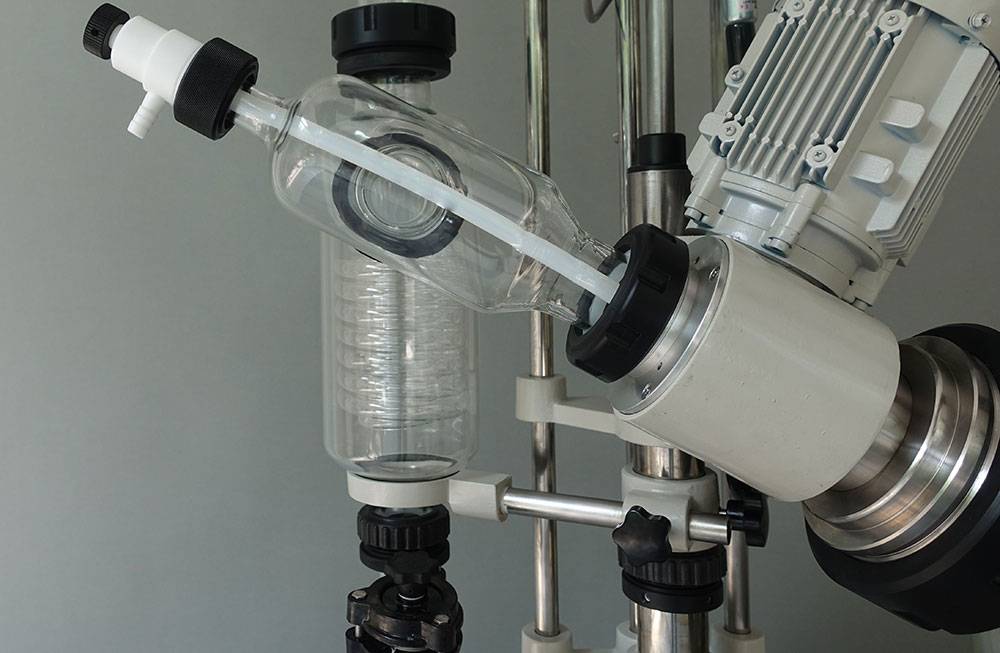
Key Considerations for Purchasing an Efficient Rotary Evaporator
Specification and Size
Selecting the appropriate rotary evaporator size is crucial for optimizing distillation efficiency in laboratory settings. The size of the rotary evaporator should be determined by the specific requirements of the experiment, including the required distillation amount, the number of samples, and the types of solvents used.
Key Factors to Consider:
-
Distillation Amount:
- Small-Scale Experiments: For experiments requiring minimal distillation, smaller rotary evaporators are ideal. These units are compact and efficient, making them suitable for handling smaller volumes of solvents and samples.
- Large-Scale Processing: Conversely, for larger-scale experiments or continuous processing, larger rotary evaporators are necessary. These units can handle higher volumes of solvents and multiple samples simultaneously, enhancing overall productivity.
-
Number of Samples:
- Single Sample: If the experiment involves processing only one sample at a time, a standard-sized rotary evaporator is sufficient. This ensures focused and efficient distillation without unnecessary capacity.
- Multiple Samples: For experiments involving multiple samples, a larger rotary evaporator with multi-sample capabilities is recommended. This allows for simultaneous processing of multiple samples, reducing overall distillation time and improving efficiency.
-
Types of Solvents:
- Volatile Solvents: For experiments involving highly volatile solvents, smaller rotary evaporators are preferable. These units can maintain tighter control over the distillation process, reducing the risk of solvent loss and ensuring accurate results.
- Non-Volatile Solvents: For non-volatile solvents or those with higher boiling points, larger rotary evaporators may be necessary. These units can handle the increased heat and pressure required for efficient distillation, ensuring that the solvents are effectively separated and collected.
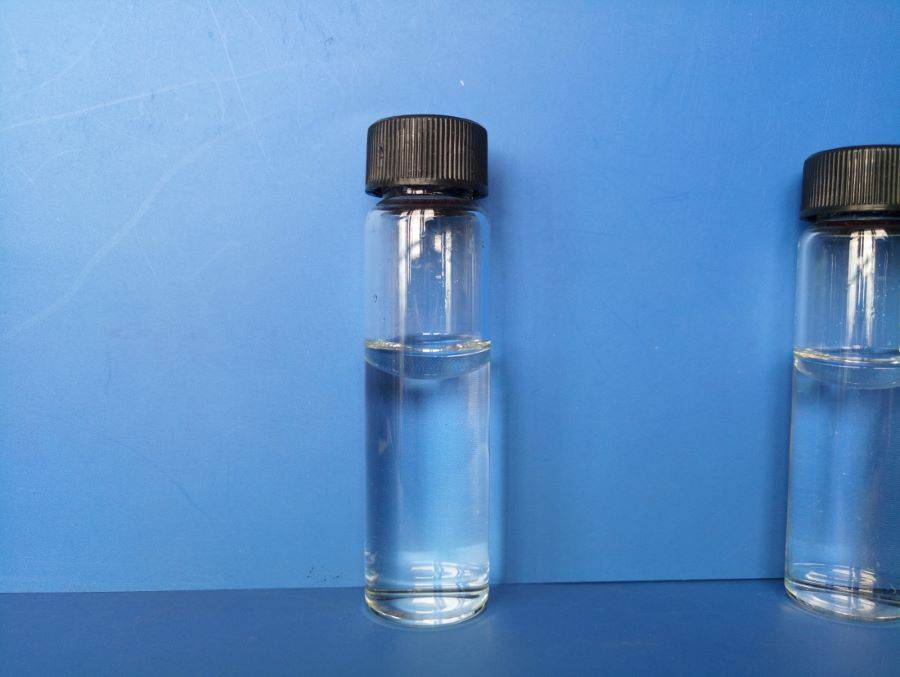
By carefully considering these factors, researchers can select the appropriate rotary evaporator size that aligns with their experimental needs, ultimately enhancing the efficiency and accuracy of their distillation processes.
Vacuum System
A high vacuum is essential for the efficient operation of a rotary evaporator, ensuring rapid and effective distillation. The vacuum system typically operates within the 10^-2 Torr range, facilitated by a two-stage rotary vane pump. This setup is crucial for maintaining a vacuum level of -0.098MPa or higher, which is necessary for optimal distillation efficiency.
To achieve and sustain such a high vacuum, materials like Teflon are preferred due to their excellent sealing properties. Glass sealing is also critical, as it provides a robust barrier against air leakage, which can compromise the vacuum. Additionally, the system includes a vacuum gauge controller with a vacuum gauge, an electro-pneumatic vacuum valve, and valves for air release and leak checking, ensuring precise monitoring and control of the vacuum environment.
In some configurations, the vacuum system can be complemented with an inert gas system, allowing for operations in gases like Argon, Nitrogen, Helium, or non-flammable forming gas. The standard positive pressure for such operations is set at 2 PSIG (0.14 Bar), with a relief valve and a compound gauge (30 PSIG x 30in. Hg) located on the vacuum chamber for safety and accuracy.
For specialized applications, options such as a Flow Adapter Kit for continuous flow with gas windows and a partial pressure control system are available, enhancing the versatility and precision of the vacuum system in various experimental setups.
Heating Pot and Medium
The temperature of the heating pot is a critical factor in the efficiency of a rotary evaporator. It should be set at least 20°C above the boiling point of the solvent being used. This ensures that the solvent reaches its boiling point quickly and efficiently, facilitating rapid evaporation. The choice of heating medium is equally important. Commonly, tap water or distilled water is used as the heating medium. Tap water is readily available and cost-effective, making it a popular choice in many laboratory settings. However, distilled water offers the advantage of being free from impurities, which can sometimes interfere with the distillation process.
When selecting a heating medium, it's essential to consider the specific requirements of the experiment. For instance, if the solvent is sensitive to impurities, distilled water might be the preferred option. Conversely, if cost-effectiveness is a priority, tap water can be a suitable choice, provided the solvent is not particularly sensitive to impurities. The medium's ability to maintain a consistent temperature is also crucial, as fluctuations can impact the distillation process. Therefore, ensuring a stable heating medium is key to achieving optimal distillation efficiency.
Condenser Selection
When selecting a condenser for a rotary evaporator, the primary decision lies between vertical and inclined condensers. Each type offers distinct advantages depending on the specific requirements of the laboratory setup.
Vertical condensers are particularly advantageous in environments where space is a premium. Their design allows for efficient use of vertical space, making them ideal for large-capacity evaporators. This vertical orientation ensures that the condensed liquid can flow directly into the collection flask without the need for additional piping or complex drainage systems.
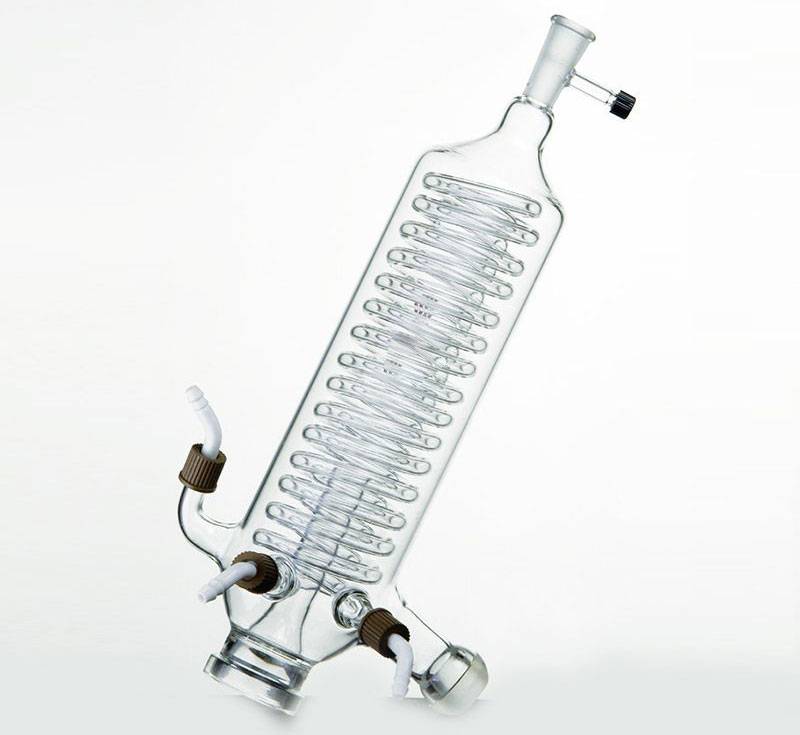
On the other hand, inclined condensers provide a more gradual cooling surface, which can be beneficial for solvents with higher boiling points or those that require a slower, more controlled condensation process. The inclined design can also facilitate better heat exchange, particularly in setups where the cooling medium needs to be more evenly distributed across the condenser surface.
| Feature | Vertical Condenser | Inclined Condenser |
|---|---|---|
| Space Efficiency | High (ideal for large-capacity evaporators) | Moderate |
| Cooling Efficiency | Direct flow into collection flask | Gradual cooling surface |
| Use Case | Space-constrained labs | Labs requiring controlled, gradual condensation |
In summary, the choice between vertical and inclined condensers should be based on the specific needs of the laboratory, with vertical condensers offering a space-saving solution and inclined condensers providing more controlled condensation processes.
Explosion-Proof Components
When dealing with flammable solvents, the safety of laboratory operations becomes paramount. To mitigate the risk of explosions, it is essential to select components that are specifically designed to prevent such hazards. Glass components, particularly those with explosion-proof coatings, offer a robust solution. These coatings are engineered to withstand the pressures and temperatures commonly encountered during distillation processes, thereby reducing the likelihood of catastrophic failures.
In addition to explosion-proof glass components, rotary evaporators equipped with automatic venting functions provide an added layer of safety. These systems are designed to detect pressure build-up within the distillation setup and automatically release it in a controlled manner. This feature not only prevents potential explosions but also ensures that the distillation process can continue smoothly without manual intervention.
To summarize, the integration of explosion-proof glass components and rotary evaporators with automatic venting functions is crucial for maintaining safety when handling flammable solvents. These features not only protect the equipment but also safeguard the personnel involved in the distillation process.
Parameters Affecting Evaporation Efficiency
Vacuum Value
The vacuum value in a rotary evaporator is a critical parameter that significantly influences the efficiency of the distillation process. This value is not merely a static number but is dynamically affected by several key components, including the vacuum pump, sealing ring, and vacuum tube. Each of these components plays a vital role in maintaining the integrity and stability of the vacuum system.
The vacuum pump, often the heart of the system, is responsible for creating the necessary negative pressure. Its efficiency is directly proportional to the vacuum value achieved. High-quality pumps, typically made from materials like Teflon, are preferred as they can sustain higher vacuum levels (up to -0.098MPa or more) without compromising on durability.
The sealing ring, another critical element, ensures that the vacuum remains intact by preventing any leaks. Materials such as rubber or silicone are commonly used for sealing rings due to their flexibility and resistance to various solvents. A well-sealed system can maintain a consistent vacuum value, thereby enhancing the overall distillation efficiency.
Lastly, the vacuum tube, which connects the pump to the evaporation system, must be robust and resistant to high temperatures and chemical exposure. Glass tubes are often favored for their transparency and inertness, allowing for visual inspection and safe operation. The choice of material for the vacuum tube can also impact the vacuum value, as certain materials may absorb or release gases, affecting the system's overall vacuum level.
In summary, the vacuum value in a rotary evaporator is a multifaceted parameter influenced by the interplay of the vacuum pump, sealing ring, and vacuum tube. Each component must be carefully selected and maintained to ensure optimal distillation efficiency.
Heating Pot Temperature
The temperature of the heating pot in a rotary evaporator is a critical parameter that significantly influences the distillation process. Higher temperatures generally accelerate the rate of evaporation, thereby speeding up the distillation process. However, this acceleration comes with trade-offs that must be carefully managed.
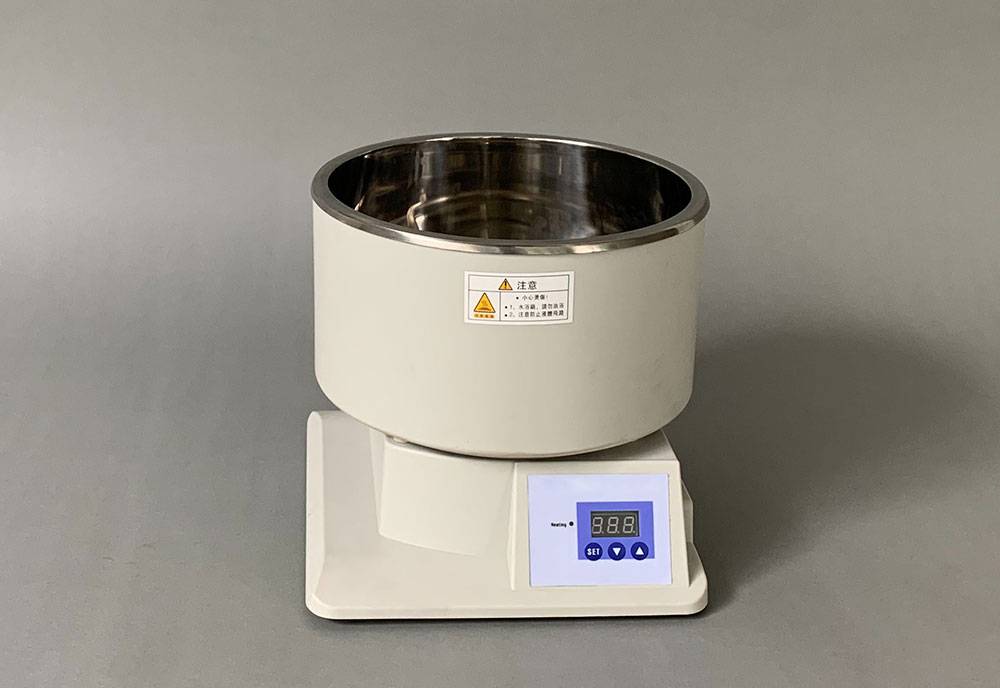
Firstly, safety is paramount. Elevated temperatures can pose risks, particularly when dealing with volatile or flammable solvents. It is essential to ensure that the rotary evaporator is equipped with explosion-proof components and automatic venting functions to mitigate these risks. Additionally, the choice of materials, such as Teflon and glass, plays a crucial role in maintaining a safe operating environment.
Secondly, ingredient sensitivity must be considered. Different solvents have varying boiling points and thermal sensitivities. The heating pot temperature should ideally be set 20°C above the solvent's boiling point to ensure efficient evaporation without causing thermal degradation of the sample. For instance, using tap water or distilled water as the heating medium can help maintain a consistent and controlled temperature.
A commonly recommended temperature for the heating pot is 60°C. This temperature strikes a balance between expediting the distillation process and ensuring safety and ingredient integrity. However, the optimal temperature may vary depending on the specific solvent and experimental requirements. Therefore, it is advisable to calibrate the heating pot temperature according to the solvent's properties and the desired distillation outcome.
In summary, while higher temperatures can enhance distillation efficiency, they must be carefully controlled to ensure safety and preserve the integrity of the sample. The selection of appropriate heating pot temperature is thus a nuanced decision that requires consideration of multiple factors.
Distillation Flask Speed
The speed at which the distillation flask rotates is a critical parameter that significantly influences the efficiency of the evaporation process. Generally, a higher rotation speed results in a larger surface area of the liquid being exposed to the heating source, thereby accelerating the evaporation rate. However, this increase in speed is not without its drawbacks. As the rotation speed increases, the thickness of the liquid film on the inner walls of the flask also increases. This thicker film can impede heat transfer, thereby reducing the overall efficiency of the distillation process.
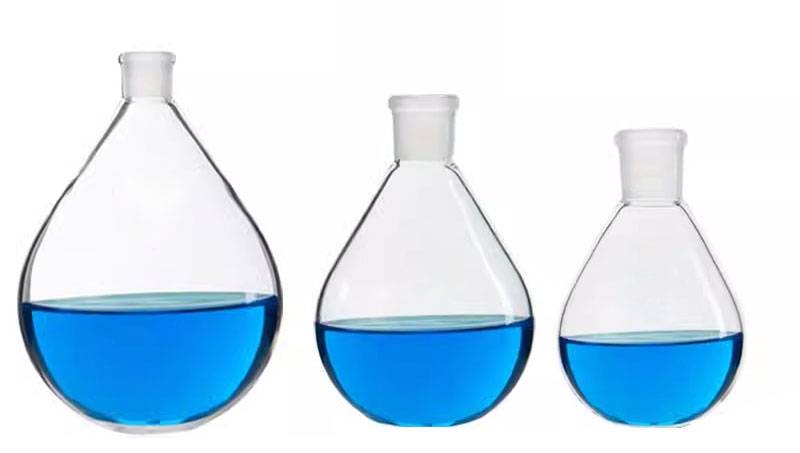
Optimal rotation speeds vary depending on the viscosity of the material being distilled. For solutions with high viscosity, lower speeds are typically recommended to maintain effective heat transfer without causing excessive liquid buildup. Conversely, less viscous materials can tolerate higher speeds, which maximize the surface area for evaporation without compromising heat transfer efficiency.
| Flask Size | Recommended Speed | Viscosity Considerations |
|---|---|---|
| 500ml | Medium to High | Lower speeds for high viscosity |
| 1000ml | Medium | Lower speeds for high viscosity |
It is essential to start the rotary evaporator at the minimum speed and gradually increase it to the desired level. This approach ensures that the system operates efficiently and safely, particularly for larger flasks and viscous solutions. The standard interface No. 24 flasks, available in 500ml and 1000ml sizes, are designed to accommodate a variety of solutions, with the general guideline being to fill them no more than 50% to ensure optimal evaporation conditions.
Cooling Medium Temperature
A significant temperature difference of 40°C between the cooling medium and the heating pot is pivotal in enhancing the efficiency of the condensation process. This differential temperature gradient not only accelerates the rate of condensation but also mitigates the impact of steam on the system's vacuum.
To further elucidate, when the cooling medium is maintained at a temperature 40°C below that of the heating pot, the condenser can more effectively convert the evaporated solvents back into liquid form. This efficient conversion is crucial as it directly influences the overall distillation yield and the stability of the vacuum system.
Moreover, maintaining such a temperature differential helps in reducing the thermal load on the vacuum system, thereby extending its operational lifespan and ensuring consistent performance. This balanced approach ensures that the rotary evaporator operates at its peak efficiency, providing reliable and consistent results in laboratory settings.
Related Products
Related Articles
- Hydrogen Atmosphere Furnaces: Applications, Safety, and Maintenance
- Comprehensive Guide to Rotating Disk Electrode (RDE) in Electrochemical Studies
- How FTIR Pellet Press Works in Sample Preparation for Spectroscopy Analysis
- Revolutionize Your Spectroscopy Analysis with FTIR Pellet Press
- 10 Essential Safety Steps for Pressure Reactor Use in Laboratories
